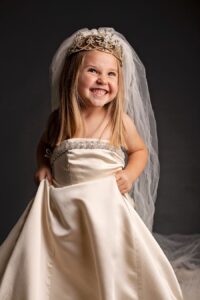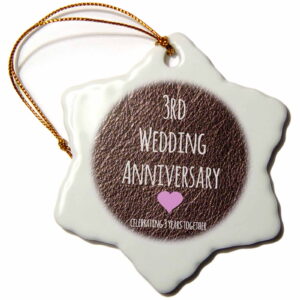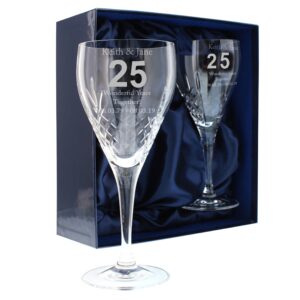A wedding ceremony is a beautiful and sacred event where two individuals come together to celebrate their love and commitment to each other. It is a joyous occasion filled with emotions, traditions, and rituals that vary across cultures and religions. From exchanging vows to the ceremonial kiss, every aspect of the wedding ceremony holds deep significance and symbolizes the couple’s journey towards a lifelong partnership. In this article, we will explore the various elements of a wedding ceremony, including the preparations, rituals, and customs that make it a memorable and meaningful event.
The Preparations
Before the wedding ceremony takes place, a lot of meticulous planning and preparation goes into creating the perfect day for the couple and their loved ones. From choosing the venue to deciding on the theme and decor, every detail is carefully thought out to ensure a seamless and enchanting experience. Here are some of the key preparations that take place:
- Venue Selection: The first step in planning a wedding ceremony is selecting a venue that reflects the couple’s style and preferences. Whether it’s a grand church, a serene garden, or a luxurious banquet hall, the venue sets the tone for the entire event.
- Theme and Decor: The couple may decide to have a specific theme for their wedding ceremony, such as a vintage-inspired wedding or a beach-themed celebration. The decor, including flowers, lighting, and props, is carefully chosen to create a magical ambiance.
- Invitations and Guest List: Invitations are sent out to family, friends, and loved ones to invite them to the wedding ceremony. The guest list is carefully curated to include those who are closest to the couple and hold a special place in their hearts.
- Wedding Attire: The bride and groom spend time selecting their wedding attire, including the wedding gown, suit, and accessories. These outfits are often chosen to reflect the couple’s personal style and cultural traditions.
- Music and Entertainment: Music plays a crucial role in setting the mood of the wedding ceremony. The couple may choose to have live musicians, a DJ, or a band to provide entertainment for their guests.
The Ceremony
The wedding ceremony itself is the heart of the entire celebration. It is a sacred and emotional exchange of vows between the bride and groom, witnessed by their loved ones. The ceremony is often conducted by a religious or spiritual leader, such as a priest, rabbi, or officiant. Let’s delve into the different components of a wedding ceremony:
1. Processional
The processional marks the beginning of the wedding ceremony and involves the entrance of the wedding party. The order of the processional may vary depending on cultural and religious customs, but typically it includes the parents of the couple, the bridal party, and finally, the bride herself. The music playing during the processional sets a beautiful and emotional tone as the bride walks down the aisle.
2. Welcome and Opening Remarks
Once the bride reaches the altar, the officiant welcomes the guests and offers opening remarks. These remarks may include words of wisdom, blessings, or a brief introduction to the couple. The purpose of this segment is to set the tone for the ceremony and create a warm and inclusive atmosphere.
3. Readings and Poems
Readings and poems are often included in the wedding ceremony to add depth and meaning. These readings may be religious or secular and can be performed by family members, friends, or the officiant. They can be chosen to reflect the couple’s beliefs, values, or favorite literary works.
4. Exchange of Vows
The exchange of vows is the heart of the wedding ceremony. It is the moment when the couple publicly declares their love and commitment to each other. The vows can be traditional, written by the couple themselves, or a combination of both. They are often deeply personal and heartfelt, reflecting the unique bond between the bride and groom.
5. Exchange of Rings
Following the exchange of vows, the couple exchanges rings as a symbol of their love and commitment. The rings are often blessed by the officiant or passed around for the guests to offer their well wishes and blessings. The act of exchanging rings signifies the joining of two individuals in a lifelong partnership.
6. Unity Ceremony
Many couples choose to include a unity ceremony in their wedding ceremony to symbolize their union. This can take various forms, such as lighting a unity candle, mixing sand in a shared container, or planting a tree together. The unity ceremony represents the coming together of two individuals and their families.
7. Pronouncement and Kiss
After the exchange of vows and rings, the officiant pronounces the couple as husband and wife. This is followed by the ceremonial kiss, which seals the marriage and marks the joyful conclusion of the wedding ceremony. The couple then walks back down the aisle together, accompanied by cheers and applause from their loved ones.
Cultural and Religious Wedding Ceremonies
Wedding ceremonies vary greatly across different cultures and religions, each with its own unique customs and traditions. Let’s take a look at some of the most popular cultural and religious wedding ceremonies:
1. Christian Wedding Ceremony
A Christian wedding ceremony typically takes place in a church and is officiated by a priest or minister. It includes elements such as scripture readings, hymns, prayers, and the exchange of vows and rings. The ceremony is often followed by a reception where the couple and their guests celebrate with food, drinks, and dancing.
2. Hindu Wedding Ceremony
A Hindu wedding ceremony, also known as a Vedic wedding, is a vibrant and elaborate affair that lasts several days. It is conducted in Sanskrit and involves rituals such as the exchange of garlands, the tying of the mangalsutra (a sacred necklace), and the circling of the sacred fire. The ceremony is followed by a grand feast and lively celebrations.
3. Jewish Wedding Ceremony
A Jewish wedding ceremony, known as a nuptial ceremony, is steeped in tradition and symbolism. It takes place under a canopy called a chuppah and involves rituals such as the signing of the ketubah (a marriage contract), the exchange of rings, and the breaking of a glass to symbolize the destruction of the Temple in Jerusalem. The ceremony is followed by a festive reception called a reception.
4. Muslim Wedding Ceremony
A Muslim wedding ceremony, known as a Nikah, is a simple and solemn event that takes place in a mosque or at home. It involves the signing of a marriage contract and the recitation of prayers and blessings. The ceremony is followed by a reception called a walima, where family and friends come together to celebrate the newly married couple.
5. Chinese Wedding Ceremony
A Chinese wedding ceremony is a blend of ancient customs and modern traditions. It often includes rituals such as the tea ceremony, where the couple serves tea to their parents to express gratitude and respect. The ceremony may also involve the exchange of gifts, the wearing of traditional attire, and the lighting of firecrackers for good luck.
Conclusion
A wedding ceremony is a sacred and joyous occasion that celebrates love, commitment, and the beginning of a new chapter in a couple’s life. It is a time when family and friends come together to witness and support the union of two individuals. Whether it’s a traditional church wedding or a vibrant cultural celebration, the wedding ceremony is a memorable and significant event that creates lasting memories for everyone involved. From the preparations to the exchange of vows and rings, every aspect of the wedding ceremony holds deep meaning and symbolizes the couple’s journey towards a lifelong partnership. It is a celebration of love, unity, and the power of commitment.
FAQs After The Conclusion
1. How long does a typical wedding ceremony last?
A typical wedding ceremony lasts around 30 minutes to an hour, depending on the customs and traditions of the couple’s culture and religion.
2. Can we customize our wedding ceremony?
Yes, absolutely! Many couples choose to personalize their wedding ceremony by including their own vows, readings, and rituals that hold special meaning to them.
3. What should I wear to a wedding ceremony?
The dress code for a wedding ceremony can vary depending on the venue and theme. It is best to follow the instructions on the invitation or ask the couple for any specific dress code requirements.
4. Can we have a wedding ceremony without any religious elements?
Yes, if you prefer a non-religious wedding ceremony, you can work with an officiant who specializes in creating personalized ceremonies that reflect your beliefs and values.
5. When should we start planning our wedding ceremony?
It’s a good idea to start planning your wedding ceremony as early as possible to ensure you have enough time to make all the necessary arrangements and secure your preferred venue and vendors.
Summary
A wedding ceremony is a sacred and joyous event that celebrates the love and commitment between two individuals. From the preparations to the exchange ofvows and rings, every aspect of the wedding ceremony holds deep meaning and symbolizes the couple’s journey towards a lifelong partnership. The preparations for a wedding ceremony involve careful planning and attention to detail, from selecting the venue and theme to choosing the wedding attire and music. The ceremony itself consists of various components, including the processional, welcome and opening remarks, readings and poems, exchange of vows and rings, unity ceremony, and the pronouncement and kiss. These elements come together to create a memorable and meaningful experience for the couple and their loved ones.
One of the most important aspects of a wedding ceremony is the processional, which marks the entrance of the wedding party. The order of the processional may vary depending on cultural and religious customs, but it typically includes the parents of the couple, followed by the bridal party, and finally, the bride herself. The music playing during the processional sets a beautiful and emotional tone as the bride walks down the aisle, accompanied by her loved ones.
After the processional, the officiant welcomes the guests and offers opening remarks. These remarks may include words of wisdom, blessings, or a brief introduction to the couple. The purpose of this segment is to set the tone for the ceremony and create a warm and inclusive atmosphere. It is a time for the couple and their guests to come together and celebrate their love and commitment.
Readings and poems are often included in the wedding ceremony to add depth and meaning. These readings may be religious or secular and can be performed by family members, friends, or the officiant. They can be chosen to reflect the couple’s beliefs, values, or favorite literary works. The readings and poems serve as a reminder of the love and support that surrounds the couple on their special day.
The exchange of vows is the heart of the wedding ceremony. It is the moment when the couple publicly declares their love and commitment to each other. The vows can be traditional, written by the couple themselves, or a combination of both. They are often deeply personal and heartfelt, reflecting the unique bond between the bride and groom. The exchange of vows is a powerful and emotional moment that symbolizes the couple’s promise to love and cherish each other for the rest of their lives.
Following the exchange of vows, the couple exchanges rings as a symbol of their love and commitment. The rings are often blessed by the officiant or passed around for the guests to offer their well wishes and blessings. The act of exchanging rings signifies the joining of two individuals in a lifelong partnership. It is a physical representation of the love and unity shared between the couple.
Many couples choose to include a unity ceremony in their wedding ceremony to symbolize their union. This can take various forms, such as lighting a unity candle, mixing sand in a shared container, or planting a tree together. The unity ceremony represents the coming together of two individuals and their families. It is a beautiful and symbolic gesture that highlights the couple’s commitment to supporting and nurturing their relationship.
After the exchange of vows and rings, the officiant pronounces the couple as husband and wife. This is followed by the ceremonial kiss, which seals the marriage and marks the joyful conclusion of the wedding ceremony. The couple then walks back down the aisle together, accompanied by cheers and applause from their loved ones. It is a moment of pure happiness and celebration as the couple embarks on their journey as a married couple.
Cultural and religious wedding ceremonies offer unique customs and traditions that add to the richness and diversity of wedding celebrations. A Christian wedding ceremony typically takes place in a church and includes elements such as scripture readings, hymns, prayers, and the exchange of vows and rings. A Hindu wedding ceremony, on the other hand, is a vibrant and elaborate affair that lasts several days and involves rituals such as the exchange of garlands, the tying of the mangalsutra, and the circling of the sacred fire. Jewish wedding ceremonies are steeped in tradition and symbolism, with rituals such as the signing of the ketubah, the exchange of rings, and the breaking of a glass. Muslim wedding ceremonies are simple and solemn, involving the signing of a marriage contract and the recitation of prayers and blessings. Chinese wedding ceremonies are a blend of ancient customs and modern traditions, often including rituals such as the tea ceremony and the exchange of gifts.
In conclusion, a wedding ceremony is a sacred and joyous occasion that celebrates the love and commitment between two individuals. It is a time when family and friends come together to witness and support the union of two souls. The preparations for a wedding ceremony involve careful planning and attention to detail, ensuring that every aspect of the event reflects the couple’s style and preferences. The ceremony itself is a beautiful and emotional exchange of vows and rings, symbolizing the couple’s journey towards a lifelong partnership. Cultural and religious wedding ceremonies offer unique customs and traditions that add depth and meaning to the celebration. Whether it’s a traditional church wedding or a vibrant cultural celebration, the wedding ceremony is a memorable and significant event that creates lasting memories for everyone involved. It is a celebration of love, unity, and the power of commitment.
FAQs After The Conclusion:
1. How long does a typical wedding ceremony last?A typical wedding ceremony lasts around 30 minutes to an hour, depending on the customs and traditions of the couple’s culture and religion.
2. Can we customize our wedding ceremony?Yes, absolutely! Many couples choose to personalize their wedding ceremony by including their own vows, readings, and rituals that hold special meaning to them.
3. What should I wear to a wedding ceremony?The dress code for a wedding ceremony can vary depending on the venue and theme. It is best to follow the instructions on the invitation or ask the couple for any specific dress code requirements.
4. Can we have a wedding ceremony without any religious elements?Yes, if you prefer a non-religious wedding ceremony, you can work with an officiant who specializes in creating personalized ceremonies that reflect your beliefs and values.
5. When should we start planning our wedding ceremony?It’s a good idea to start planning your wedding ceremony as early as possible to ensure you have enough time to make all the necessary arrangements and secure your preferred venue and vendors.





